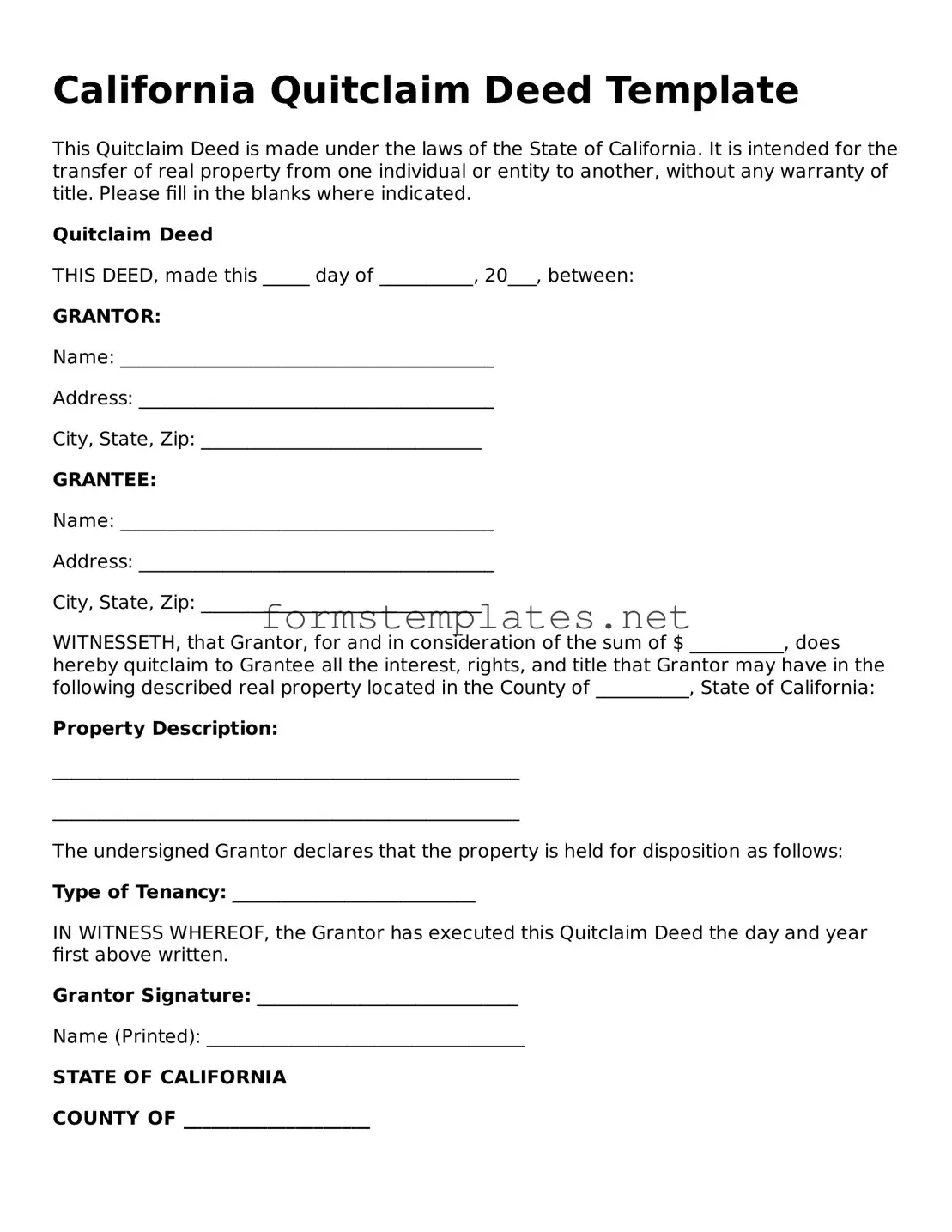California Quitclaim Deed Template
This Quitclaim Deed is made under the laws of the State of California. It is intended for the transfer of real property from one individual or entity to another, without any warranty of title. Please fill in the blanks where indicated.
Quitclaim Deed
THIS DEED, made this _____ day of __________, 20___, between:
GRANTOR:
Name: ________________________________________
Address: ______________________________________
City, State, Zip: ______________________________
GRANTEE:
Name: ________________________________________
Address: ______________________________________
City, State, Zip: ______________________________
WITNESSETH, that Grantor, for and in consideration of the sum of $ __________, does hereby quitclaim to Grantee all the interest, rights, and title that Grantor may have in the following described real property located in the County of __________, State of California:
Property Description:
__________________________________________________
__________________________________________________
The undersigned Grantor declares that the property is held for disposition as follows:
Type of Tenancy: __________________________
IN WITNESS WHEREOF, the Grantor has executed this Quitclaim Deed the day and year first above written.
Grantor Signature: ____________________________
Name (Printed): __________________________________
STATE OF CALIFORNIA
COUNTY OF ____________________
On this _____ day of __________, 20___, before me, a Notary Public in and for said County and State, personally appeared ______________________, known to me to be the person whose name is subscribed to this instrument and acknowledged that he/she executed the same.
Witness my hand and official seal.
Notary Public Signature: ___________________________
My Commission Expires: ____________________________
